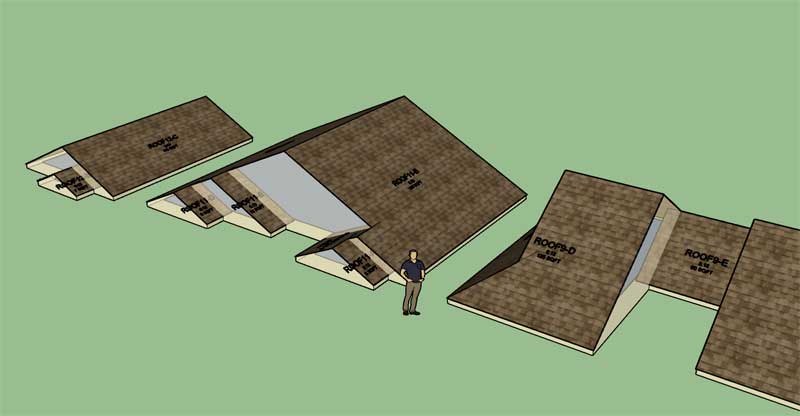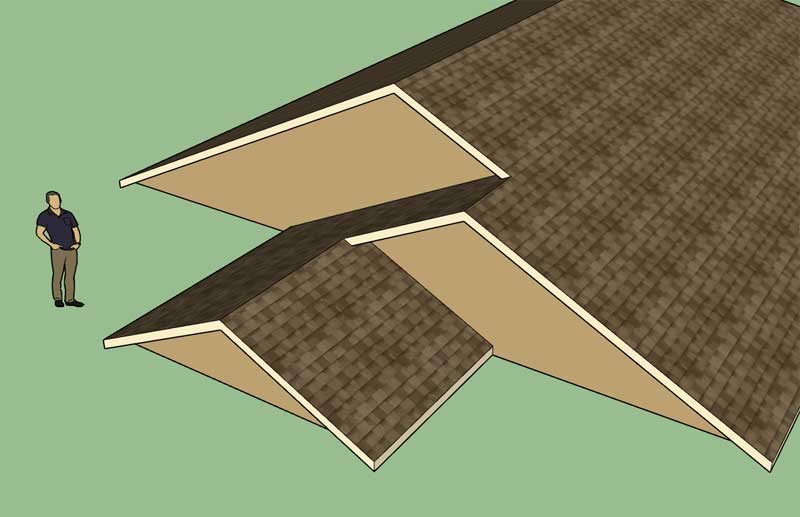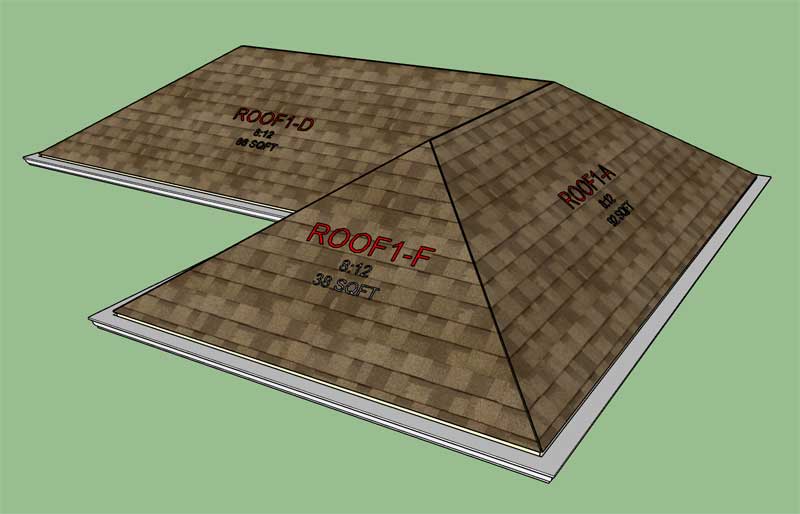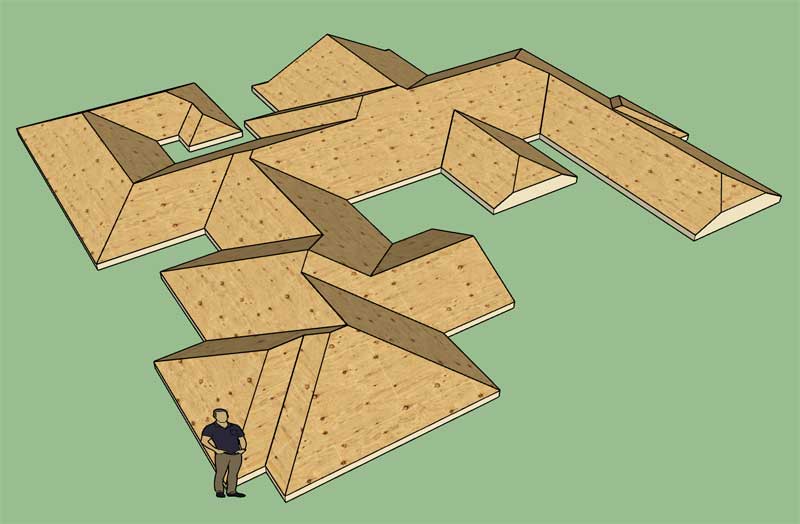As I'm taking a break from the code before my trip it dons on me that the soffit & fascia, primarily the fascia is probably more important than the actual roof framing right now. If I have that feature enabled it will allow the designer to complete his or her elevations. Whereas the framing is a critical future feature but does not really come into play for the actual construction documents.
With that in mind, I think my next big push will be to complete the soffit & fascia, then I will begin the framing algorithms. The good news is that the fascia algorithms will be very similar to the sub-fascia so most of my work there is already done.
Also speaking to a number of plugin clients earlier today it took me back at how many of them actually use AutoCad for their construction documents, and just import parallel projections from SketchUp as a DXF/DWG. Even though the resulting mess of "dumb lines" in your AutoCad drawing is not optimal I suppose it is still quicker and easier to do this rather than to try and actually draw a complex roof elevation from scratch.
With that in mind, I think my next big push will be to complete the soffit & fascia, then I will begin the framing algorithms. The good news is that the fascia algorithms will be very similar to the sub-fascia so most of my work there is already done.
Also speaking to a number of plugin clients earlier today it took me back at how many of them actually use AutoCad for their construction documents, and just import parallel projections from SketchUp as a DXF/DWG. Even though the resulting mess of "dumb lines" in your AutoCad drawing is not optimal I suppose it is still quicker and easier to do this rather than to try and actually draw a complex roof elevation from scratch.










